Gorilla Trekking Uganda: A Journey into the Heart of the Jungle Giants
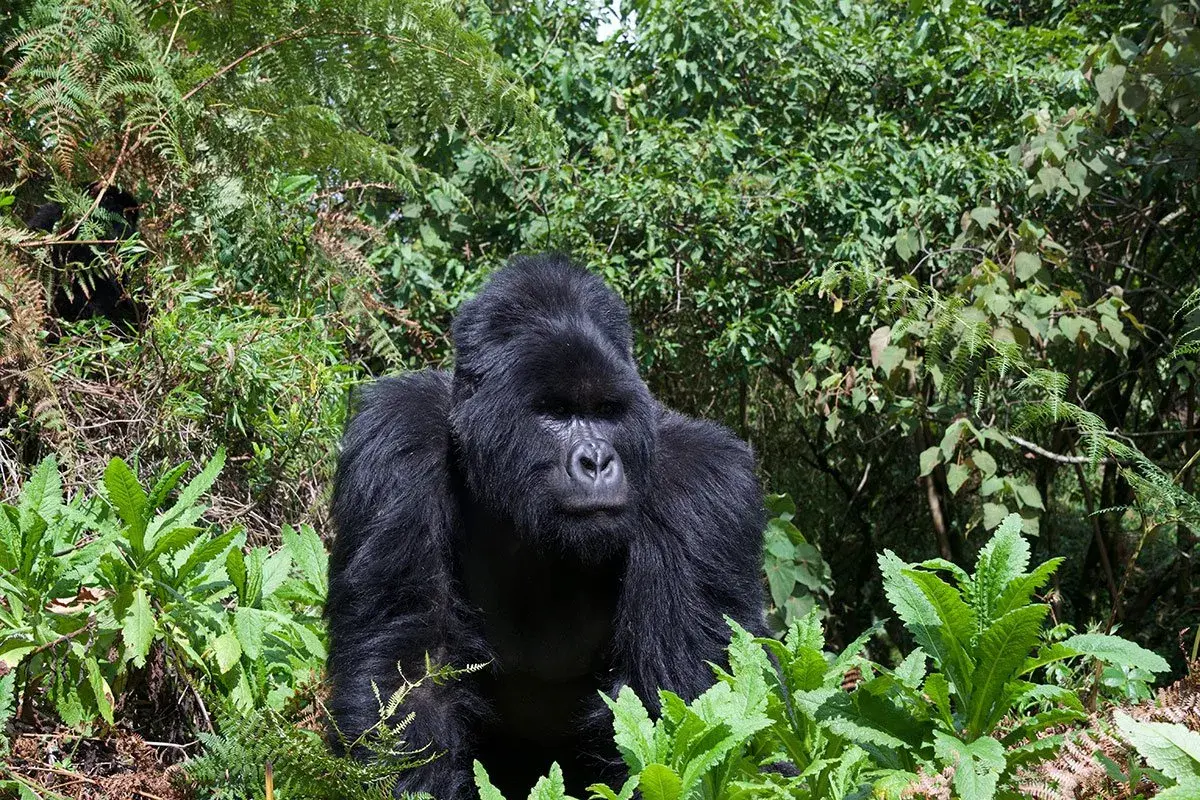
Imagine standing mere metres away from some of the last remaining mountain gorillas in the world, observing them in their natural habitat. This is the thrilling reality of gorilla tours in Uganda. The nation, often referred to as the “Pearl of Africa,” is renowned for its diverse landscapes, rich biodiversity, and, most notably, its population of majestic mountain gorillas.
Gorilla trekking safaris offer adventure enthusiasts and wildlife lovers the chance to hang out with these gentle giants on their turf and by their rules. Read on to find out more about this unforgettable adventure and how to navigate this experience responsibly with gorilla trekking Uganda in mind.
Book Your Gorilla Trekking Tours With Us
To book an unforgettable gorilla trekking safari in Bwindi impenetrable forest national park, we invite you to contact us via phone or WhatsApp at +254-704-532-105. You can also connect with us via email at safarioffers@kenyaluxurysafari.co.uk or safarioffers@ajkenyasafaris.com.
James Gatheru, our senior consultant is on hand to answer queries and help plan your trip. In addition to gorilla trekking safaris in Uganda, we also offer wildlife safari tours in neighbouring Kenya and Tanzania. You can combine your gorilla trekking holidays in Uganda’s jungles with a safari in Africa’s savannah for some wildlife action.
Gorilla Safaris - Photos by Our Clients
Discovering the Mountain Gorillas
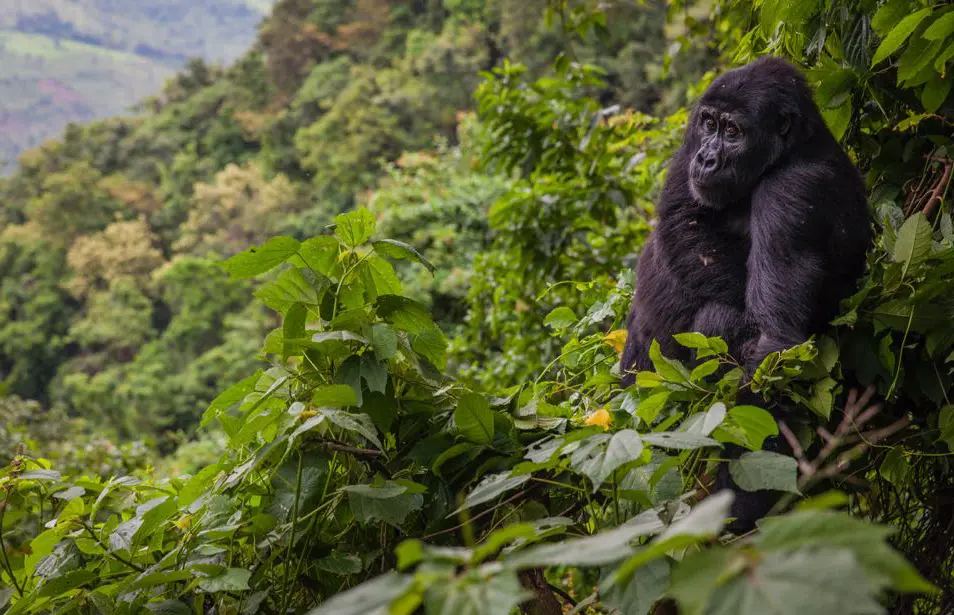
There are two main species of gorillas, each inhabiting distinct regions in Central Africa—the Eastern Gorilla (Gorilla beringei) and the Western Gorilla (Gorilla gorilla). These species are further divided into subspecies based on their geographic locations.
Eastern Mountain gorillas are found across the volcanic mountains of East-Central Africa (including the Virunga Mountains) and in the rainforests of Bwindi Impenetrable Forest (Uganda). The Virunga Mountains are a chain of mostly inactive volcanoes spanning the borders of Uganda, Rwanda and the Democratic Republic of Congo.
One of the Eastern mountain gorilla subspecies inhabits montane and bamboo forests at higher elevations—which explains why we trek up the misty jungles of Uganda/Rwanda to see them. The other subspecies (the lowland gorillas) inhabit both lowland and montane forests of the eastern part of DR Congo.
Western Gorillas are found in several Central African countries, including Cameroon, Central African Republic, Republic of Congo, Equatorial Guinea, Gabon, and Nigeria. These gorillas inhabit a variety of habitats, including lowland tropical forests and swampy forests.
Of these, the Cross River Gorillas sub-species is the rarest and most endangered of all gorilla subspecies, with a small and fragmented population. They can be seen in the forested mountains along the border of Nigeria and Cameroon.
Mountain Gorillas in Uganda
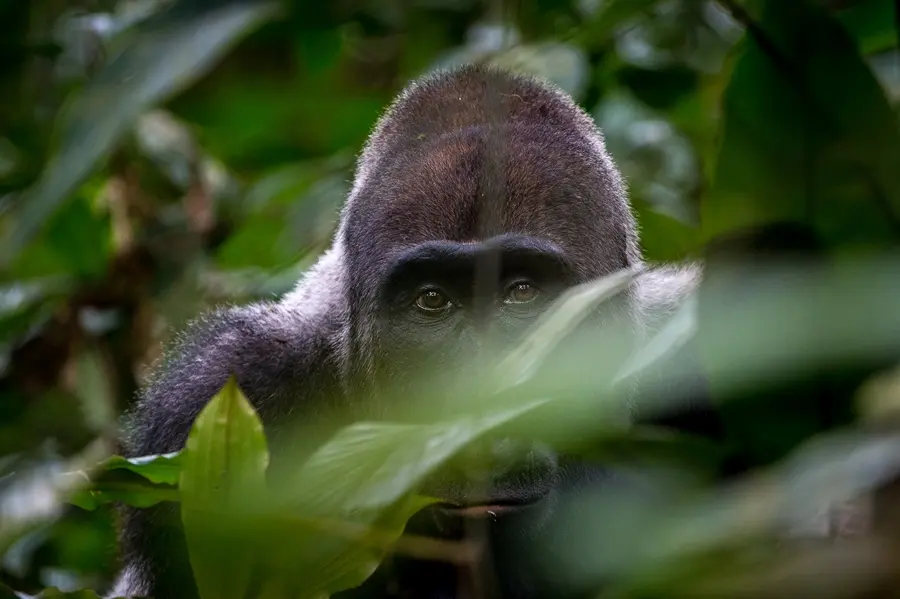
Mountain gorillas in Uganda are primarily found in two main areas: Bwindi Impenetrable Forest National Park and Mgahinga Gorilla National Park. Both Bwindi and Mgahinga National Parks are located in southwestern Uganda bordering Rwanda and Democratic republic of Congo.
Mountain gorillas have no thought for political borders meaning their populations across the Virunga Mountains are relatively fluid. They move from Rwanda’s Volcanoes National Park and into Virunga National Park in DR Congo, or Mgahinga National Park and vice versa depending on food supply, etc. The gorillas in Bwindi impenetrable forest stay within its boundary meaning you’re more likely to encounter them.
The Gorillas of Bwindi Impenetrable Forest
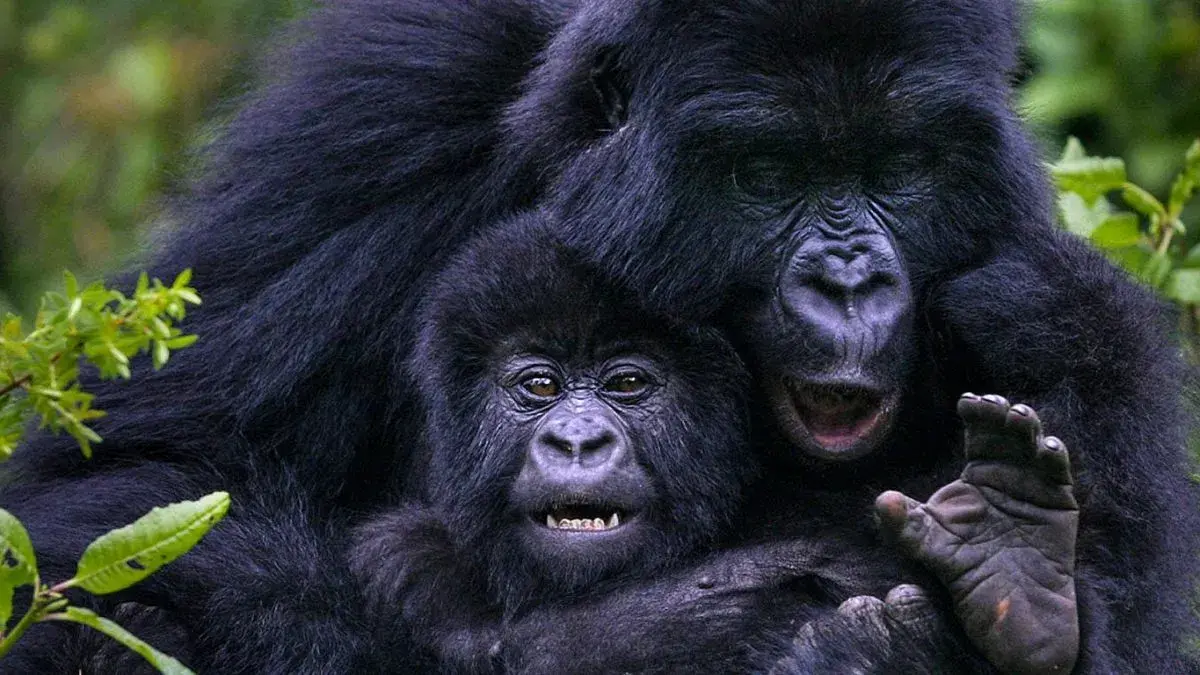
Home to nearly half of the world’s remaining mountain gorilla population, Bwindi Impenetrable Forest is a UNESCO World Heritage Site and a sanctuary for these endangered primates. The park’s dense vegetation provides a haven for various wildlife, making it an exceptional destination for eco-tourism.
Bwindi is aptly named “impenetrable” due to its dense vegetation, which includes a mix of montane and lowland forests. The forest canopy is thick, creating a lush and green environment. Bwindi is renowned for its exceptional biodiversity, hosting a wide variety of plant and animal species. The forest is a habitat for numerous bird species, butterflies, and a diverse array of flora, including many endemic and endangered species.
Bwindi National Park is divided into four tracking sectors—Rushaga, Nkuringo, Ruhija, and Buhoma. Once you purchase your gorilla permit, you can venture into these sectors to visit mountain gorillas.
Presently, the mountain gorilla population in Bwindi is divided into 13 solitary individuals and 50 gorilla families. Of these, only 21 families have been habituated. The Rushaga sector is the most scenic, hosts most of the habituated families and allows for gorilla tracking experiences.
Besides gorilla watching, you can also spot other primates that live in this jungle including the L’Hoest’s monkeys, Blue monkeys, De Brazza monkeys, Colobus monkeys, Baboons, Spectacled Galago, and Chimpanzees.
The Gorillas of Mgahinga Gorilla National Park
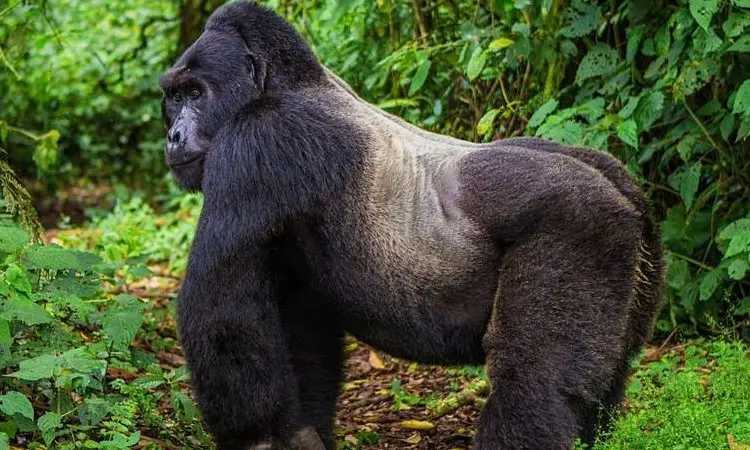
Mgahinga, established in 1991, is yet another home of the endangered mountain gorillas. Mgahinga is characterized by a captivating volcanic landscape, featuring three dormant volcanoes—Mount Muhabura, Mount Gahinga, and Mount Sabyinyo. The park is part of the Virunga Massif, that extends into Rwanda and the Democratic Republic of the Congo.
Mgahinga is home to montane forests, which cover the lower slopes of the volcanic mountains. These forests are characterized by a mix of tree species adapted to the cool and moist conditions at higher elevations.
Bamboo zones are prevalent in the park. These bamboo forests provide important habitat and food for various wildlife species, including the endangered mountain gorilla and golden monkeys. Around the edges of the park, are areas of cultivated lands where local communities practice agriculture.
The park provides a habitat for a specific group of mountain gorillas known as the Nyakagezi Group, which is available for gorilla trekking experiences. This family is found in the Ntebeko sector—the only sector in Mhahinga where gorilla treks take place. Rwanda gorillas (the Hirwa gorilla family) troop into Mgahinga from Parc National des Volcans for a couple of months before going back. They are not considered a Ugandan gorilla group.
In addition to your one-hour gorilla-watching, there are several other activities you can enjoy at Mgahinga including
- Golden monkey trekking
- Forest birding experiences
- Hiking up Mt Sabinyo
- Boat cruises and canoeing excursions in nearby lakes like Lake Chahafi, Mulehe, and Mutanda
What Happens on Gorilla Trekking Tours
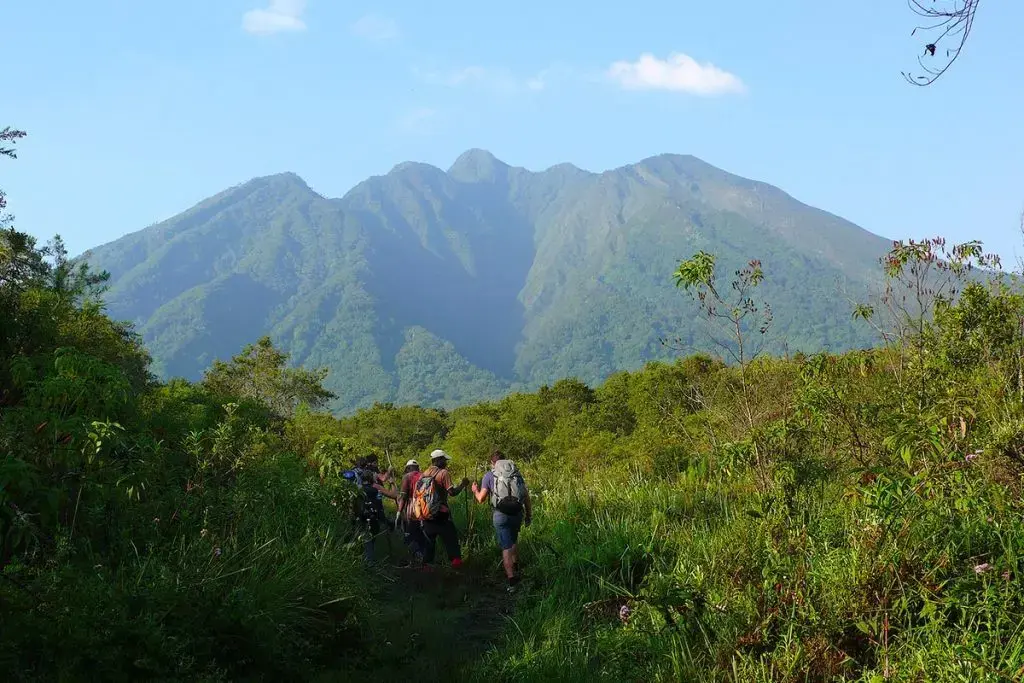
Gorilla treks in Bwindi Impenetrable Forest is a thrilling and immersive adventure that offers a unique opportunity to observe endangered mountain gorillas in their natural habitat. Here’s what you can expect during a gorilla trekking experience in Bwindi:
- Pre-trekking briefing: Your gorilla trek day begins with a pre-trekking briefing at the park headquarters. Park rangers provide important information about the gorilla families, trekking guidelines, safety precautions, and general expectations. This briefing is essential for ensuring a safe and enjoyable experience.
- Group allocation: Visitors are divided into small trekking groups, each assigned to a specific gorilla family. The allocation considers factors such as fitness levels, preferences, and the location of the gorilla groups within the park.
- Trekking into the forest: The trek starts with a hike into the dense and lush vegetation of the forest. The duration of the trek varies, and the distance covered depends on the location of the gorilla group on that particular day.
- Gorilla tracking: Led by experienced guides and accompanied by armed park rangers, you embark on the actual gorilla tracking. Trackers use their knowledge of the forest and signs such as nests, dung, and broken vegetation to locate the gorilla families.
- Encountering the gorillas: Once a gorilla group is located, you spend a designated amount of time (usually one hour) in their presence. Visitors have the opportunity to observe gorillas up close, learn about their behaviour, and appreciate the intricate dynamics of the family.
- Observing gorilla behaviour: During the hour spent with the gorillas, you can witness various aspects of their behaviour, including feeding, grooming, playing, and interactions between family members. You’re allowed to take photographs and videos.
- Return journey: After the allotted time with the gorillas, you begin the trek back to the park headquarters. The return journey may take a different route, providing additional opportunities to appreciate the biodiversity of Bwindi.
- Certificate presentation: Upon completion of the trek, visitors receive a certificate to commemorate their gorilla trek experience. The certificates acknowledge the contribution made to gorilla conservation through permit fees.
- Conservation contributions: The fees paid for gorilla permits contribute to the conservation of the gorillas and their habitat. These funds support anti-poaching efforts, community projects, and the overall protection of Bwindi Impenetrable Forest.
Gorilla Habituation Experience

The Gorilla Habituation Experience (GHE) in Uganda is a unique and immersive activity that allows visitors to spend an extended period with a gorilla group. On this adventure, you observe and document gorilla behaviour as they are habituated (made accustomed) to human presence. Unlike standard mountain gorilla trekking, where visitors spend a limited time with habituated groups, the habituation experience involves a more prolonged and in-depth encounter with the gorillas.
The gorilla habituation experience typically starts early in the morning, and participants meet at the park headquarters for a briefing before embarking on the trek. You’ll be accompanied by a team of researchers, trackers, rangers, (and in some cases gorilla doctors). They trek into the dense forest in search of the designated gorilla group undergoing habituation.
During this time, researchers and trackers will work to habituate the gorilla groups to the presence of humans. You may witness them mimicking gorilla behaviour to earn their trust and make them more comfortable in people’s presence. You’ll spend a maximum of four hours with the group watching and recording their behavior and response to human presence.
Tips for a Successful Gorilla Safari
Here are some tips to help make your gorilla safari successful:
- Physical fitness. Tracking gorillas in dense jungles can be physically demanding, so being in good health and reasonably fit is advisable. Gorillas are susceptible to human diseases, so if you have the flu you may not be allowed to visit the gorillas.
- Packing essentials. Sturdy hiking boots, a rain poncho (jacket), long trousers, a long-sleeved shirt, a hat, sunscreen, and insect repellent are essential. A walking stick can come in handy when you’re climbing a steep hill.
- Respect for wildlife. Following guidelines and maintaining a respectful distance from the gorillas is crucial to their well-being. Before your trek starts, these guidelines will be shared with you at the park’s headquarters.
- Advance booking. The Uganda Wildlife Authority (UWA) limits the number of gorilla permits issued daily to ensure the gorillas are not overwhelmed by human presence. Advanced booking (through your tour operator or directly with UWA) allows you to secure the chance to hang out with these wonderful creatures.
- Note: We recommend hiring a local porter on your gorilla trek expedition. They assist by carrying your gear and provide valuable support during the trek by helping you navigate difficult terrain and steep slopes. Moreover, hiring a porter contributes to the local economy and supports community development.
Seasonal Insights: When to Plan Your Visit
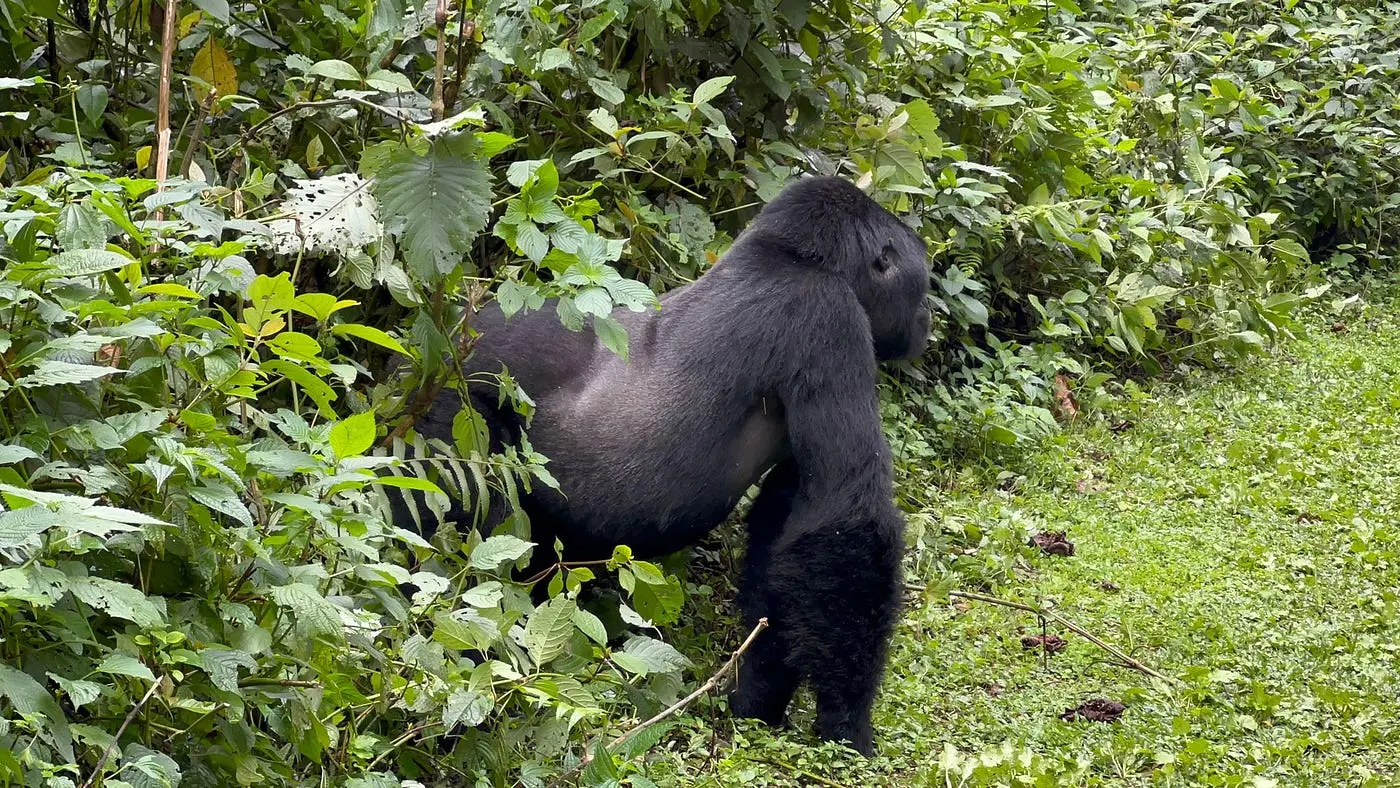
Like any other adventure, timing your gorilla trekking trip is crucial. While you can visit Uganda all year round, certain months offer more favourable conditions for gorilla safari and optimal experiences.
Uganda experiences two main seasons: the dry and wet seasons. The dry season, which typically runs from December to February, experiences less rainfall and clear skies. This season makes a gorilla trek more convenient, with less muddy trails and less dense vegetation, making it easier to spot the gorillas. This being a pleasant time for gorilla tours also means that gorilla permits are in higher demand
On the other hand, the wet season, which usually occurs from March to May and September to November, is characterized by heavy rain and thunderstorms. Trekking in Bwindi impenetrable national park may be challenging but possible and fun. The upside is that securing a gorilla trekking permit may be easier and you may enjoy reduced accommodation costs.
Unique Experiences Beyond Gorilla Trekking
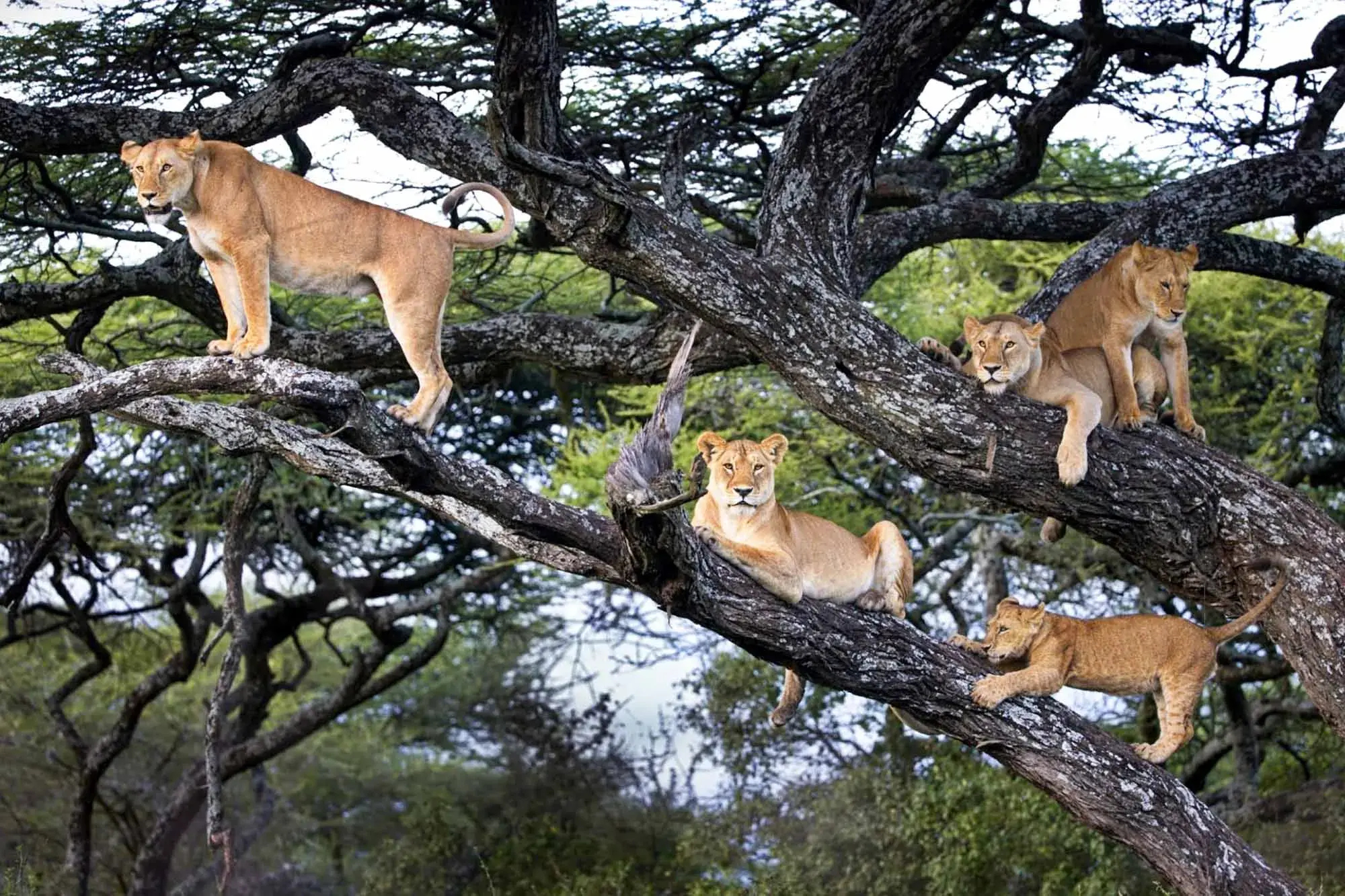
Gorilla trekking is undoubtedly the highlight of a visit to Uganda. However, Uganda’s rich biodiversity offers other unique wildlife experiences worth exploring. Other activities you can add to your itinerary include
- Chimpanzee tracking in Kibale forest
- Golden Monkey tracking in Mgahinga Forest National Park
- Bird watching at Lake Mburo National Park
- Game drives to see the famous tree-climbing lions of Queen Elizabeth National Park
- Boat cruises to witness the magnificent Murchinson Falls at Murchinson Falls National Park
You can also combine your gorilla tours in Uganda with other destinations in East Africa. Both Uganda and Rwanda host mountain gorillas so you can combine Rwandan culture and wildlife safaris with gorilla treks in Bwindi Impenetrable National Park. You can go on a Big 5 safari in Akagera National Park or primate trekking in Nyungwe Forest National Park before crossing the border into Uganda.
East African countries such as Kenya and Tanzania offer excellent African safaris in iconic destinations such as the Masai Mara National Reserve and the Serengeti National Park. Our pristine beaches are the perfect getaway after spending time in the tropical rainforest tracking gorillas and golden monkeys.
Summary
Gorilla trekking in the beautiful Ugandan nation is more than just an adventure; it’s a journey into the heart of one of the world’s most diverse ecosystems. Whether you’re navigating the terrains of Bwindi Impenetrable National Park or hanging out with gorillas, your journey contributes towards the conservation of mountain gorillas and their habitats. From adventure seekers to wildlife enthusiasts and responsible travellers, gorilla safaris in Uganda offer unforgettable experiences that leave a lasting impact.
Frequently Asked Questions
Next, we answer some common questions we get about Gorilla Trekking in Uganda.
Is Gorilla Trekking Safe in Uganda?
Yes, gorilla trekking is a safe activity in Uganda. Every trekking excursion into Bwindi or Mgahinga is undertaken in the company of experienced rangers who will instruct you on what to do at every stage. You will be just fine as long as you follow their instructions.
Which Month is Best for Gorilla Trekking in Uganda?
For gorilla trekking, the best time to visit Uganda is between December and February, and June to August, when conditions are most favourable. Securing a gorilla permit during these months requires advanced booking due to high demand.
Is It Better To See Gorillas in Uganda or Rwanda?
Considering the abundance of mountain gorilla groups in Bwindi National Park and the availability of gorilla permits at a cheaper price, Uganda is a better option to see the endangered mountain gorillas. With a minimum two-night stay (ideally three nights), you’ll have plenty of time to observe the magnificent creatures.
What Is a Gorilla Permit and Why Is It Necessary?
The mountain gorillas are typically protected by armed guards in the wild. A gorilla permit is a document issued by wildlife authorities in both Uganda and Rwanda to grant you access to these primates. To ensure that the gorillas’ way of life isn’t disturbed by humans, local governments regulate gorilla safaris by limiting the number of gorilla permits issued daily. The funds collected from gorilla permit issuance are ploughed back into protecting the endangered mountain gorilla and its habitat.
What Are the Primary Parks or Reserves in Uganda Renowned for Their Wildlife Safaris?
Murchison Falls National Park and Queen Elizabeth National Park are renowned for abundant and breathtaking safaris. If you’re looking for a more remote experience, then we highly recommend Kidepo Valley National Park. It’s home to many big cats, big mammals, and other prey so you’re likely to catch some action. Plus the scenery is gorgeous.
